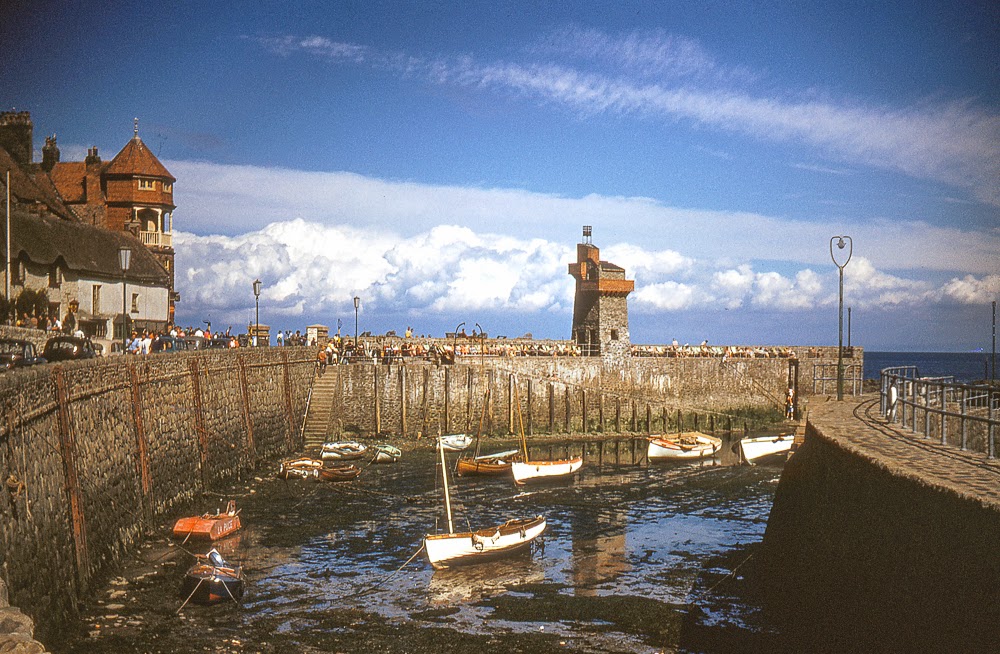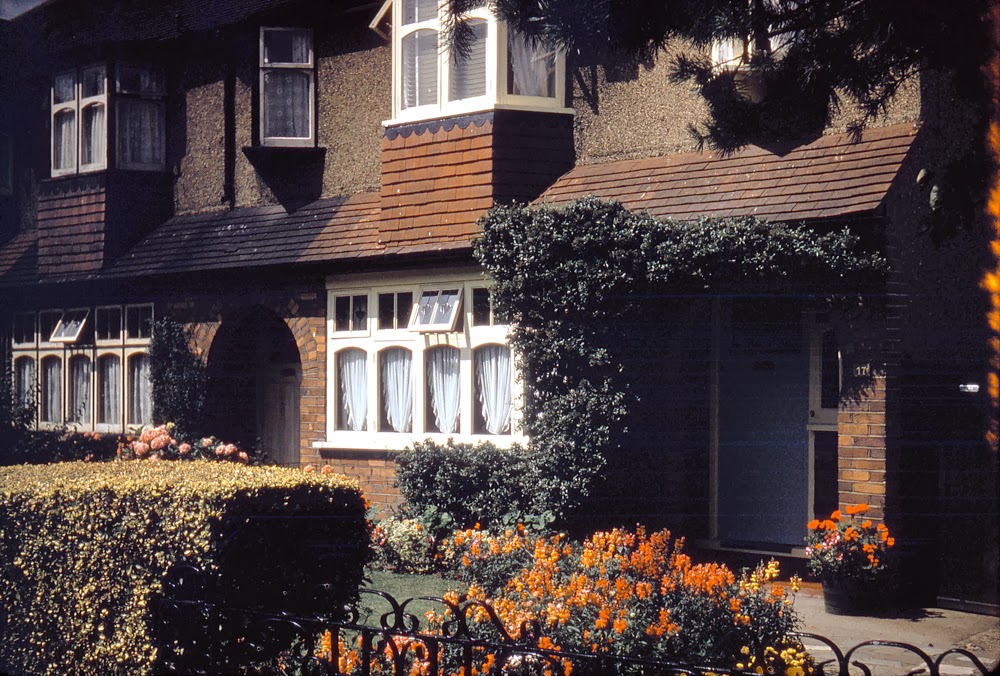
There’s nothing particularly remarkable about these pictures except their age and the use of an extinct but magisterial film. It was Kodachrome, discontinued in 2009 but now, in 2017 there is a glimmer of hope that it will be revived.
A couple of weeks ago Kodak announced that they are resurrecting Ektachrome colour slide film and that they will be launching a Super 8 film camera to use Ektachrome Super 8 film.
They also announced that they are investigating the feasibility of manufacturing Kodachrome again. Behind these announcements is the big upswing in demand for film among younger enthusiasts. They are turning to film in droves, in much the same way that young music enthusiasts are dusting off vinyl records. Also many movie studios want to shoot on film for the specific ”look”. It seems as if everything old is new again.
Fuji have been trying very hard to drive their remaining film business into the ground by repeatedly jacking up prices and discontinuing emulsions. Maybe Kodak’s move will cause them to reappraise this strategy.
Not an easy task
Starting Kodachrome again will not be easy. Most of the complex coating equipment will have been scrapped. Also much of the hands-on know-how will have been lost when the technicians left. There is also the question of processing as Kodachrome requires a complex regime. There was only one Kodachrome processing lab left operating when Kodak discontinued manufacture of the film, Dwayne’s Photo Service in Parsons, Kansas, USA. It was there that the “last” roll of Kodachrome, shot by Steve McCurry in 2010, ended the line.
If Kodachrome does reappear I would be tempted to run a few rolls through my Hasselblad. Big 6×6 Kodachrome slides — magic but surely very expensive.
The news of the possibility in a revival of Kodachrome set me sniffing around the old shoeboxes and I came across these pictures. Both were taken by me in 1960 with my first camera — a Halina 35X.
The Halina was apparently made in China — although it was marked “Made in Hong Kong” — and had a resemblance to a Leica. Yet Leica themselves had not adopted the red dot at that time. Perhaps the Leica resemblance and a few favourable reviews, not to mention the price, attracted me.
As it happens I have fond memories of that camera and its surprisingly good results. Of course it had no exposure metering so I used a newly acquired and quite reliable little hand held Hanimex Sekonic lightmeter. The Halina had a metal body and you had to manually cock the shutter as well as advance the film after each shot. I do remember that the focusing was always very stiff and I found out this was a characteristic of the model, not just of my example.
14th Birthday
Soon after I received the camera as my 14th birthday present from my parents I took it and a much-prized cassette of the — to me — incredibly expensive Kodachrome film on our family holiday to North Devon in the England. The Kodachrome was the original 10 ASA (now known as ISO) emulsion. Hand-held shots were really only possible in bright sunlight — often a rare experience in the UK but not, luckily, on that holiday. The film had almost no exposure latitude and it was very contrasty. But it was sharp and the colours were bright as you would expect from Kodachrome. Of course, the last thing you need with a contrasty film is bright sunlight; but with only 10 ISO and a maximum aperture on the camera of f/3.5 you really had no choice.
Kodachrome could at that time be processed only by Kodak themselves and the processing was included in the price of the film. When you purchased the film there was a small envelope in the box and you put the cassette of exposed film into it, stuck on some stamps and posted it back to Kodak — in my case to their laboratory in the UK. A week or so later a little yellow box of 36 mounted slides popped through the letterbox. The films were identified by Kodak with numbers on labels which were stapled on the leader of the films as they were put into the processing machine.
It seems these labels often became detached and I received the incorrect slides on a number of occasions. It must have been very harrowing for someone waiting for slides of the big wedding or whatever to receive someone else’s great work. I heard that at that time Kodak had a department wholly devoted to chasing up incorrectly directed slides.
The top photo is the first slide I have ever scanned from that little very basic camera and I am still very surprised by the quality. I have not manipulated it at all. This is just how it came out of the camera. The slide is now 57 years old — from a completely different era. Since then everything has changed and improved so much. including — hopefully — my photographic skills.

But this story just took another turn for on a Monday morning it was pouring with rain (at last) and I spent time clearing out a cupboard and found a slide numbered “1” on the cardboard mount from that first film. It was, not perhaps surprisingly, a photo of my home at that time in Station Avenue, Ewell, Surrey. There was a little fogging into the lip of the cassette which is visible on the right hand edge. I did search in Lightroom for some detail in the shadows but there is none — they are black. That’s how it was. So there it is: My first colour photo, the first of tens of thousands as it turned out.
_______________
- Read more from John Shingleton at The Rolling Road
- Subscribe to Macfilos for free updates on articles as they are published. Read more here
- Want to make a comment on this article but having problems? Please read this


I seem to remember that theHalina 35X advertised that the lens elements were manufactured in the UK by Chance Pilkington, then were shipped to Hong Kong for assembling with the rest of the camera. I think that they were disyributef in the UK by a company J Silber.
best regards
Mike Barton
I very much enjoyed this nostalgic look back not least as likewise used Kodachrome almost exclusively even as a Pro sports photographer going right back from the 1950s and the original 10 ASA version (10 ISO for you youngsters!) through to its eventual demise, and amidst this for five Olympics and Soccer World Cups plus hundreds of car and motorcycle GP’s. Why? Well not just because I always liked Kodachrome colour better than that from any other film, but also because it was almost 100% stable. Hence I still have something like three quarter of a million colour slides whose colours are still as good as the day they were taken. No other transparency film could claim that, not even Kodak’s own Ektachrome emulsions. Don Morley
Thanks John. Your slides must bring back wonderful memories; they certainly do for me. Summers in that era always seemed to be sunny, but maybe we just took photos when the sun was shining. Even though my father had a good job, cameras in 1960s Ireland were relatively expensive and the ‘one per family’ rule usually applied. My father used Kodakchrome on his Baldina camera (a search under ‘Baldina’ on this site will reveal something about it and some photos and I have posted a slide of myself at 14 or 15 years saving hay in the West of Ireland). I had to do some repair work on that slide as it was somewhat time-worn by the time I got to scan it. I have boxes of slides from that era, many with cardboard slide mounts. I have seen Kodakchrome slides that my father took on his honeymoon in 1947, but I am not sure whether I have them or whether they are with my older brother.
In the 1980s, when I was in my 30s, I took up photography seriously and started to use Kodakchrome, which by that time was in plastic mounts. I also used the Fuji equivalents such as Velvia. Nothing in the digital era has given me the same thrill as receiving a fresh box of developed slides from the postman, particularly if they were ones from a holiday in some ‘exotic place’ in Italy or France. Some time during the 1990s I stopped shooting slide film as I was busy with my career and photography had to take a back seat. Around 2002 I bought a new Nikon film SLR and when I was in B&H in New York that year, I purchased some Velvia and shot it. All of the memories of great slides from earlier years came flooding back. But then in 2004, I purchased a Nikon D70 (one of the great digital breakthrough cameras for a lot of people, it must be said). Later that year when I went on a long trip to New Zealand via the USA, my film stayed at home and the D70 was my main photographic tool. After that I spent some time in the Middle East and digital photography was exactly what I needed.
It was only after I came back to Ireland started to collect vintage Leicas that I took up film photography again. There is a Slide Circle in the Leica Society and having seen some slide projections at the society’s AGM some years ago, I enquired about E6 processing in Dublin. What I was told seemed incredibly complicated and awkward. Something like, leave them in on a Tuesday at a certain time and come and collect them at a different time on the following Thursday week. I lost the will to proceed with that.
My understanding is that somebody has bought the rights to the Ektachrome process from Kodak and will be able to market it as Kodak. That is probably the easy bit and the whole logistical back up, involving independent processors etc will be the hard part. I don’t really see Kodakchrome coming back as the processing and chemical sides are really difficult and the cost per roll could be extremely high. I would love to see it happen, though.
Thanks John for the wonderful photo and articles. You have started me thinking about slides again. Who needs a Leica M10, if you could have Kodakchrome again?
William
Ah, leafy Ewell, just a mere spit from where I am currently sitting.
It’s almost like a caricature of the reality, but nevertheless very attractive to the eye, the colours all seem overblown, but because the whole shebang is concentrated into a viewed image, this characteristic somehow enhances that image.
The k14 processing seems to be very complicated and not one to try at home, which beggars the question as to how strong the desire for this film is, and whether even with the current popularity of film it would be commercially viable.
E6 looks intimidating enough, though it can be managed with one machine or at a pinch with a drum.
I believe that last year in the UK (at least) for the first time in over twenty years, vinyl records outsold CD’s, so I suppose it is not beyond the realms that similar could happen with some of these old films, but Kodachrome?